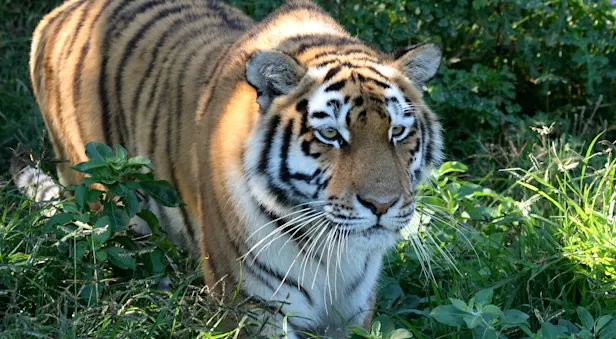What to Pack for Your Sri Lanka Adventure
The following packing list contains general recommendations for Sri Lanka Wildlife & Cultural Treasures. If you are currently booked on a Sri Lanka safari with Nat Hab, please consult your pre-departure materials for the most up-to-date packing list specific to your trip. You will receive these materials 60-90 days before your departure.
Items indicated in color below are typically available in the Nat Hab Gear Store. Please note that due to global supply chain issues beyond our control, we cannot guarantee that every item will always be in stock.
Adventure Guidelines
It can be quite cold in the higher altitude areas of Sri Lanka in January and February, with temperatures dropping into the upper 30s Fahrenheit at night and early mornings. During the day it can reach the 80s Fahrenheit but, if you are not in the sun, it can still feel cool. Temperatures start to warm up in the low country during mid- February to March.
Plan to dress in layers, including long pants, sweater or fleece jacket and waterproof outer layer while in Horton Plains National Park and Nuwara Eliya.
In the low country on all departures, and the hills from late February onwards, the days are pleasant and occasionally hot in the afternoons; lightweight clothing is recommended.
Sun hats are essential throughout the trip, and long sleeves are advisable for wildlife drives and whale watching excursions to protect you from the sun.
Wildlife drives can be extremely dusty. We recommend bringing a bag to protect your photo equipment and eye drops if you are sensitive to dust.
We encourage you to take into account local attitudes toward modesty and propriety. Your style of dress will, in part, determine your acceptance by, and interaction with, local people. Always check with your guide concerning proper dress code for the day’s activities. Shoulders and upper arms must be covered when visiting temples and places of worship. Long trousers or skirts below the knee must be worn in sacred places.
While you may see other tourists wearing these items, in general, shorts and tank tops (clothing that reveals your knees and shoulders) are considered disrespectful and are not culturally appropriate. This is especially true for women.
It is acceptable, however, to wear shorts and tank tops during wildlife drives while in the national parks.
Clothing
Rain gear
—Although our adventure takes place during the drier winter, Sri Lanka is a tropical island, and it is possible to encounter inclement weather at any time of year. We recommend bringing durable, lightweight, fully waterproof (not just water-resistant) rain gear, including a jacket with hood and rain pants.Warm fleece
—Particularly important for January departures.Sturdy walking shoes
—Bring comfortable shoes that are appropriate for walks in dry or inclement weather. They should be broken in to prevent blisters.Extra pair of comfortable shoes
—To wear after outdoor excursions.2 short-sleeved shirts
—You may not need short-sleeved shirts for trips departing in January to mid-February. However, they can be more comfortable for mid to later season departures as temperatures warm up. Bring modest shirts that cover your shoulders for activities that take place outside national parks.2–3 long-sleeved shirts
—Long-sleeved shirts are recommended for early season departures, and throughout the season while at higher elevation. They are also very useful for sun protection while on wildlife drives and insect protection in the evenings.2–3 pairs of long pants
Long skirt for women (optional)
Socks
—Bring socks made of wool or other moisture-wicking material; cotton socks are not recommended for longer walks.
—As you will need to remove your shoes while visiting temples and monasteries, and floors in these public places tend to be cold and very dirty, you may also wish to bring an old pair of socks you can wear during these outings.Underwear
Sleepwear
Slippers
—Optional—floors in the hotels and lodges can be cold.Swimsuit
—Optional—some of our hotels have swimming pools or you may wish to take a swim in the Indian Ocean while staying on the coast.
Additional Items
Cash
—For discretionary gratuities (you may want to bring envelopes for discreet presentation).
—For personal spending (souvenirs, Internet use and food and beverages not included in your trip fee).Binoculars
—Binoculars will greatly improve your experience of wildlife viewing and are highly recommended.Water-resistant daypack
—To carry camera equipment or other gear during outings.Dust-proof drawstring bag
—Helpful to protect your equipment from dust when traveling in open 4x4s on wildlife drives.Headlamp or small flashlight
—Power outages are not uncommon in this part of the world. Carry spare batteries.
—Although not required, consider a headlamp with a red filter for the evening walk to look for the slender loris and other nocturnal wildlife.Lightweight neck gaiter (included in your pre-trip package)
—Provides sun, wind and/or dust protection.Reusable water bottle (included in your pre-trip package)
—In our continuing effort to operate our adventures with as little impact on the environment as possible, you will receive a reusable water bottle (unless you opted out on your Booking Form) to take with you on your adventure. We will provide drinking water throughout the adventure for you to refill your bottle. By doing this, you will avoid using multiple disposable plastic bottles.Small, compact umbrella
Sunglasses (with UV protection)
Prescription glasses/contact lenses
Earplugs
Hand sanitizer
Toiletries in reusable containers to minimize waste
—Shampoo, soap and conditioner are provided at all accommodations.Washcloth
—You may wish to bring a washcloth if you prefer to use them, as they may not be provided by all accommodations.Toilet paper
—As toilet paper is not always available in public restrooms, you may want to keep a roll in your daypack. Take out the center roll for easier packing.Insect repellent
Sunscreen and lip balm (at least SPF15)
Hairdryers are provided at all accommodations except for Kulu Safari Camp in Yala National Park, where they can’t be used due to insufficient solar power.



































